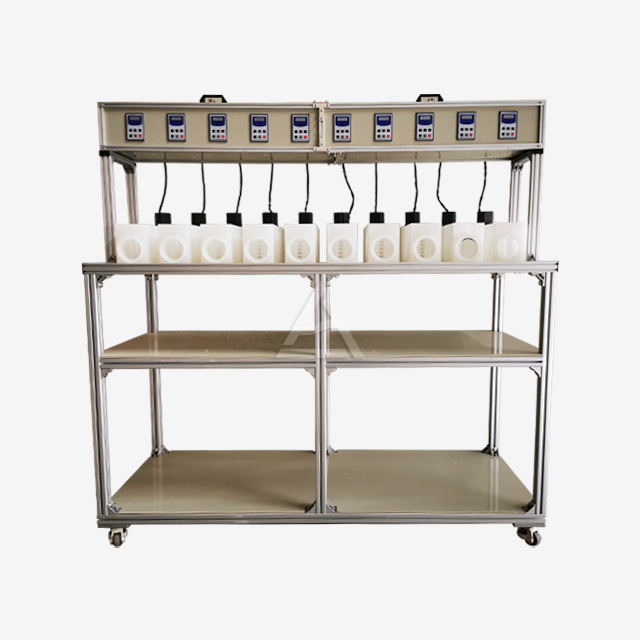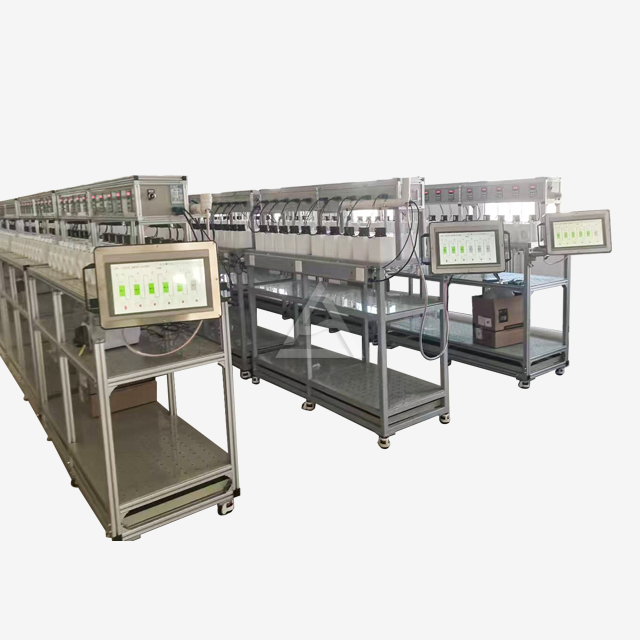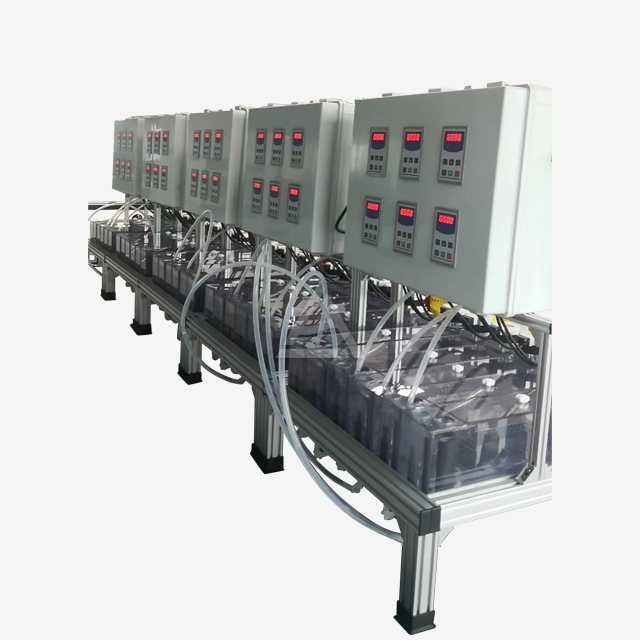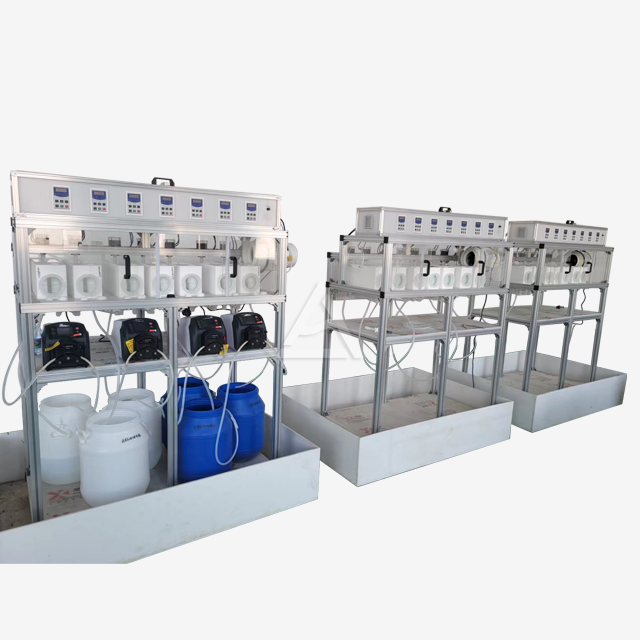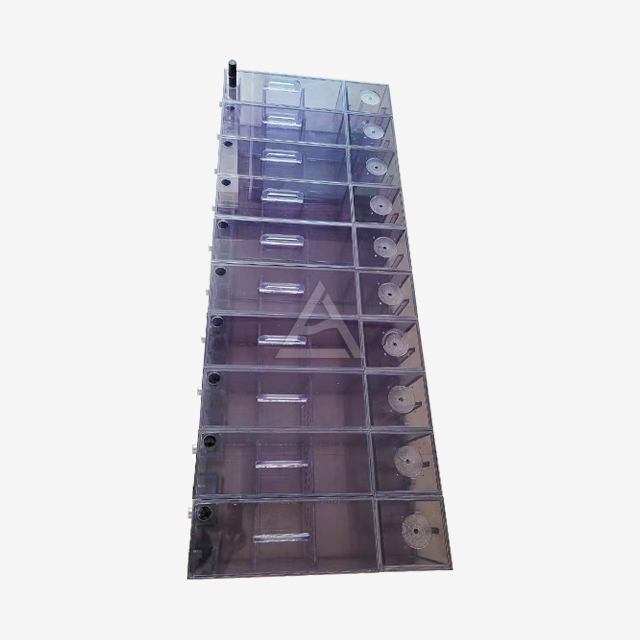Understanding Mixer Settler Technology
Principles of Operation
Mixer settler extraction devices operate on a simple yet powerful principle. The process begins in the mixing chamber, where two immiscible liquids are vigorously agitated. This intense mixing creates a large interfacial area between the phases, promoting rapid mass transfer of target compounds. The mixture then flows into the settling chamber, where gravity separation occurs. Here, the phases separate based on density differences, with the heavier phase settling to the bottom while the lighter phase rises to the top.
Key Components and Design Features
The effectiveness of a mixer settler lies in its thoughtful design. The mixing chamber typically features a high-speed impeller or turbine to ensure thorough blending. The settling chamber incorporates baffles and weirs to guide fluid flow and maintain a stable interface between phases. Advanced models may include sensors for real-time monitoring of pH, temperature, and liquid levels, allowing for precise control over the extraction process.
Advantages Over Traditional Extraction Methods
Compared to conventional extraction techniques, mixer settlers offer several distinct advantages. Their continuous operation allows for higher throughput and more consistent results. The ability to adjust parameters on-the-fly provides greater flexibility in handling varying feed compositions. Additionally, the compact design of mixer settlers often results in a smaller footprint and lower energy consumption compared to alternative separation methods.

Optimizing Mixer Settler Performance
Fine-tuning Operational Parameters
To maximize the efficiency of a mixer settler, careful adjustment of operational parameters is crucial. The agitation speed in the mixing chamber directly impacts the degree of phase contact and, consequently, the extraction efficiency. Too low a speed may result in insufficient mixing, while excessive agitation can lead to emulsion formation, hindering phase separation. Similarly, the flow rates of both phases must be balanced to maintain optimal residence times in each stage.
Material Selection for Enhanced Durability
The choice of construction materials plays a vital role in the longevity and performance of mixer settlers. For corrosive applications, materials like PTFE or high-grade stainless steel (e.g., SUS316L) offer excellent resistance across a wide pH range. In processes where visual monitoring is beneficial, transparent materials such as PMMA can be employed for certain components. The selection should consider factors like chemical compatibility, mechanical strength, and ease of maintenance.
Implementing Advanced Control Systems
Modern mixer settlers benefit greatly from the integration of advanced control systems. Programmable Logic Controllers (PLCs) can automate the adjustment of operational parameters based on real-time sensor data. This level of control ensures consistent performance even with fluctuating feed conditions. Additionally, data logging and analysis capabilities allow for continuous process optimization and troubleshooting.

Applications Across Industries
Rare Earth Element Extraction
In the field of rare earth element extraction, mixer settlers have proven invaluable. The process of separating individual rare earth elements, such as neodymium and dysprosium, requires multiple extraction stages due to their similar chemical properties. Mixer settlers excel in this application due to their ability to handle multi-stage extractions efficiently. The precise control over mixing and settling conditions allows for the fine-tuning necessary to achieve high-purity separations, critical for applications in advanced electronics and renewable energy technologies.
Nuclear Fuel Processing
The nuclear industry relies heavily on mixer settler technology for the separation of uranium and plutonium in fuel reprocessing. This application demands exceptionally high standards of safety and precision. Mixer settlers offer the advantage of containment, reducing the risk of contamination. The ability to adjust interface heights and mixing intensities allows operators to optimize the extraction process for different isotopes, ensuring efficient separation while maintaining strict safety protocols.
Wastewater Treatment and Metal Recovery
In environmental applications, mixer settlers play a crucial role in treating industrial wastewater and recovering valuable metals. For instance, in the treatment of electroplating effluents, mixer settlers can efficiently remove and concentrate heavy metals like copper and zinc. The multi-stage capability allows for the sequential removal of different metal species, while the continuous operation ensures consistent treatment of large volumes of wastewater. This not only helps in meeting stringent environmental regulations but also enables the recovery of valuable resources from waste streams.

Conclusion
Mixer settler extraction devices represent a significant advancement in separation technology, offering a powerful combination of efficiency, flexibility, and precision. By leveraging the principles of controlled mixing and settling, these devices enable industries to achieve higher purity products with lower energy consumption. As we've explored, their applications span a wide range of sectors, from critical material extraction to environmental remediation. The continued development of mixer settler technology, including improvements in materials, design, and control systems, promises even greater efficiencies and capabilities in the future of chemical separations.
Contact Us
Experience the cutting-edge in extraction technology with Cuiyan Technology. Our advanced mixer settler devices offer unparalleled efficiency and customization for your specific extraction needs. From rare earth purification to wastewater treatment, our solutions deliver superior results. Contact us today at wangzhijun@cuiyan-tec.com to discover how our mixer settlers can revolutionize your separation processes.




